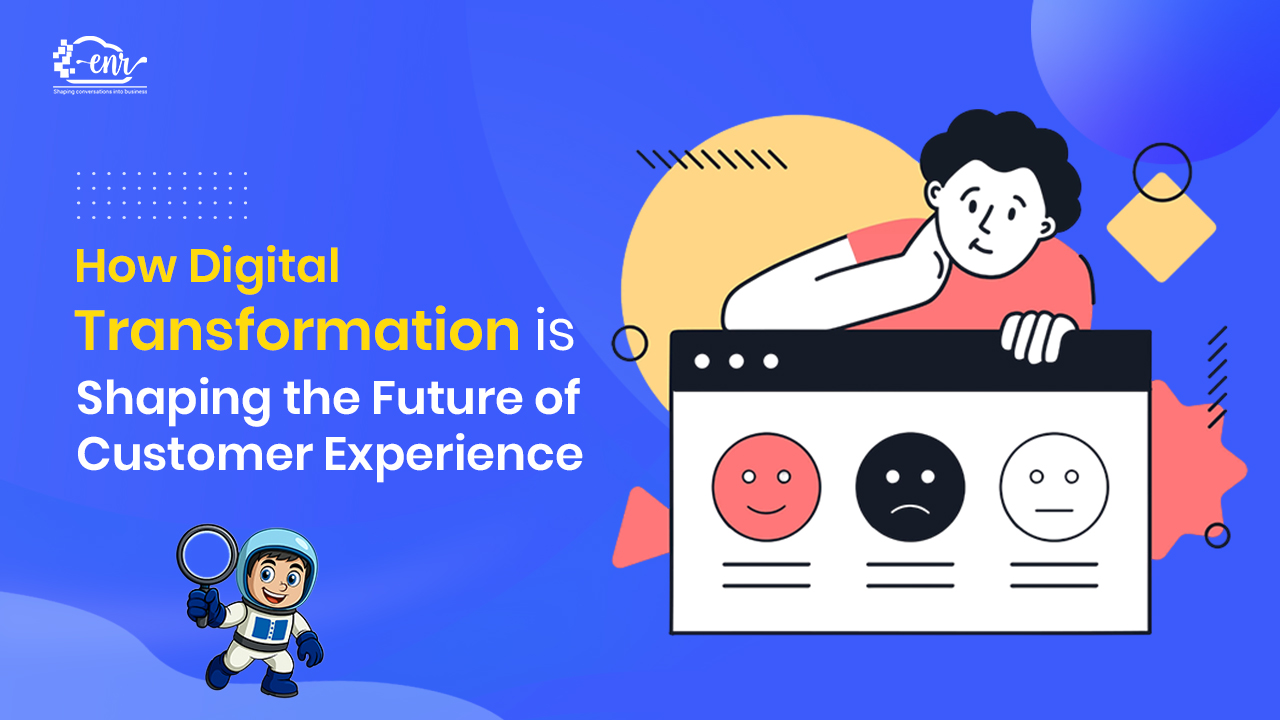Table of Contents
ToggleIntroduction
Improving customer experience, engagement, and retention is the only way for a business to succeed in the long run. This statement holds true for both B2C and B2B businesses. Businesses are always looking for ways to gain more customers, upsell and cross sell and conversational AI is the way to go! Conversational AI is the use of artificial intelligence to present intuitive, human-like interactions in the natural flow between customers and businesses.Â
Why the need for Conversational AI?
Traditional bots are very rigid in their responses and often leave the customer frustrated and angry. The scripted interactions waste a lot of time for the consumers, turning them away from the brand. This is where conversational AI shines, as it understands the intent and can actively resolve the issue.
Over 71% of global enterprises use AI to improve customer experiences and are making significant investments in improving customer services with the use of self-service technologies and automation tools. Conversational AI is reshaping how companies plan their engagement and retention strategies with its 24/7 availability, personalized experiences, and efficient problem resolution at an unprecedented scale. It is used in all industries, from retail to healthcare. AI scales as the business grows, without loss of quality in increased volume.Â
This article explores how conversational AI is enhancing customer experience, strengthening customer engagement, and improving retention strategies by exceeding customer expectations across industries.Â
What is Conversational AI?

Conversational AI is the transformative and advanced AI solution reshaping the way consumer service is executed. It includes AI-powered chatbots, virtual assistants, and voice bots employed at websites and social media channels. AI uses NLP, ML, and speech recognition technologies to simulate human-like conversations which understand the contexts, learn from previous interactions, and provide tailored and accurate solutions that satisfy customer queries and if necessary seamlessly connect users to human agents.Â
Here are some facts about Conversational AI
- Businesses that use conversational AI see a 70% increase in customer satisfaction.Â
- Conversational AI market is set to reach $19.21 billion in 2025.
- 77% of consumers are more inclined to shop from businesses they can interact with naturally.Â
- It can use call-to-message and vice a versa deflection seamlessly.
- Conversational AI as robust security practices in place and protects sensitive customer information.
- Conversational AI uses multiple APIs to ensure consistent conversation across all channels.Â
- Conversational AI boosts consumer experience by incorporating digital features like interactive advertisements linking the consumer directly to the messaging or shopping platforms, optimizing engagement and retention.
Components of Conversational AI

In order to provide a seamless customer experience and boost engagement and retention, conversational AI uses robust core technologies that form the foundation of customer service.
- Natural Language Processing (NLP): Helps understand and interpret human language.
- Machine Learning (ML): Allows AI to adapt and improve its responses over time based on past and present interactions.
- Automatic Speech Recognition (ASR): Enables voice-based conversations and continues to refine the responses to enable more personalization.Â
- Text-to-Speech (TTS) and Speech-to-Text (STT): Voice to text and text to voice in real time for seamless conversations.
- Integration Frameworks: Conversational AI can be integrated with CRM, marketing automation tools, and other shopping and customer service platforms for accessing personal data to customize experiences.Â
Examples of conversational AI in customer interactionsÂ
- Chatbots that pop up on the websites and can help with FAQs, order tracking, and troubleshooting.Â
- Voice assistants such as Siri and Google Assistant.
- Customer support powered by conversational AI reduces wait time and improves trust.
- AI-driven messaging apps sending bespoke product or service recommendations and offers.
Conversational AI and Customer ExperienceÂ

Businesses shift towards more use of conversational AI for creating better customer experiences. As a benefit, they save on costs too, and can divert resources towards creative tasks in refining products, services, and sales and marketing strategies. Here are some ways that conversational AI is augmenting customer experience around the globe:
27/7 Availability and Instant Responses
AI does not sleep, or nor is its response time limited by working hours. Conversational AI gives round-the-clock support, giving customers the answers whenever they need them.
Personalization using AI Insights
AI has access to customer data, and it can draw insights about customer behavior, past interactions, and preferences, giving the right response and making the customer feel valued. This increases engagement, and the businesses get refined customer data. For example, the banking chatbot suggests relevant options to customers based on their spending patterns.Â
Faster Query Resolution and Almost Zero wait times
Conversational AI handles multiple queries simultaneously, reducing the wait times for consumers and giving quick resolutions. For example, the phone app AI helps customers reset passwords, upgrade plans, and check data usage in no time.
Omnichannel Support and Seamless Integration
A customer expects the same information, help, and support from the brand on all channels, such as websites, apps, messaging apps, and social media, including YouTube. Conversational AI can switch seamlessly and provide a unified response to smoothen customer experience. For example, a customer can start a query on WhatsApp and finish the purchase on the website without entering information again and again.Â
Multilingual Support to Reach Global Customers
Conversational AI is not bound by language or time barriers, thus improving accessibility for all consumers. For example, a fitness app can assist customers in Hindi, English, Tamil, Urdu, Spanish, and Russian depending on their location.Â
Conversational AI and Customer Engagement

Proactive Solutions, Engagement, and Recommendations
Conversational AI does not wait for the customers to ask questions; it can send recommendations and reminders to keep the consumer engaged. For example, the banking bot can send EMI reminders to help consumers avoid late fees.Â
Conversational Commerce
AI-assisted shopping is the latest trend; it converses with the customer to understand their requirements, helps make purchase decisions, suggests products, and even guides for the payment process, keeping the consumer engaged.Â
Customer Feedback and Surveys
Conversational AI interacts and engages with customers in the form of chat-based surveys, relieving them of the monotony of boring forms.Â
Interactive Experiences and Gamification
Conversational AI boosts engagement by creating fun and interactive events, games, quizzes, etc. as a part of an engagement strategy for consumers. For example, a beauty brand chatbot creates personalized quizzes to help consumers personalize their skincare routine and offer discounts and recommendations based on responses.Â
Conversational AI and Customer Retention

AI-Powered Loyalty ProgramsÂ
AI offers loyalty rewards and incentives to retain customers and boost engagement.
Predictive Customer Support
By analyzing the data sets of the past interactions and current searches, conversational AI can offer predictive issues and concern resolutions before the consumers reach out. The helpful tips keep the consumers engaged.
Churn Reduction
AI can identify at-risk customers and give immediate retention offers to re-engage them. Such offers can include discounts and upgrades.Â
Automated Re-EngagementÂ
Conversational AI sends regular, and relevant follow-up with consumers to boost engagement and keep the brand in the forefront of their minds.
Conclusion
Conversational AI is a boon for improving customer experience, retention, and engagement. It streamlines customer service by automating tasks; its advanced technology understands customers and builds loyalty by maintaining the speed of responses and boosting satisfaction even during peak hours. Conversational AI is no longer an optional tool – it has become an essential part of customer service for businesses that want to stay competitive and future-ready.Â
Read Also: How AI Agents Are Changing Marketing, E-Commerce, and Customer Service?
Written By – Amit Bhateja
Amit Bhateja is the co-founder of enrcloud and helping brands and Unicorns from the last 15+ years and overachieve their Engagement and Retention goals. He is passionate about solving customer problems with modern technology, new age solutions, and consultancy approach. Besides Building ENR, He enjoys reading books, spending time with his family and Teammates, traveling, meeting new people, learning new things, and love to close the business deals.





